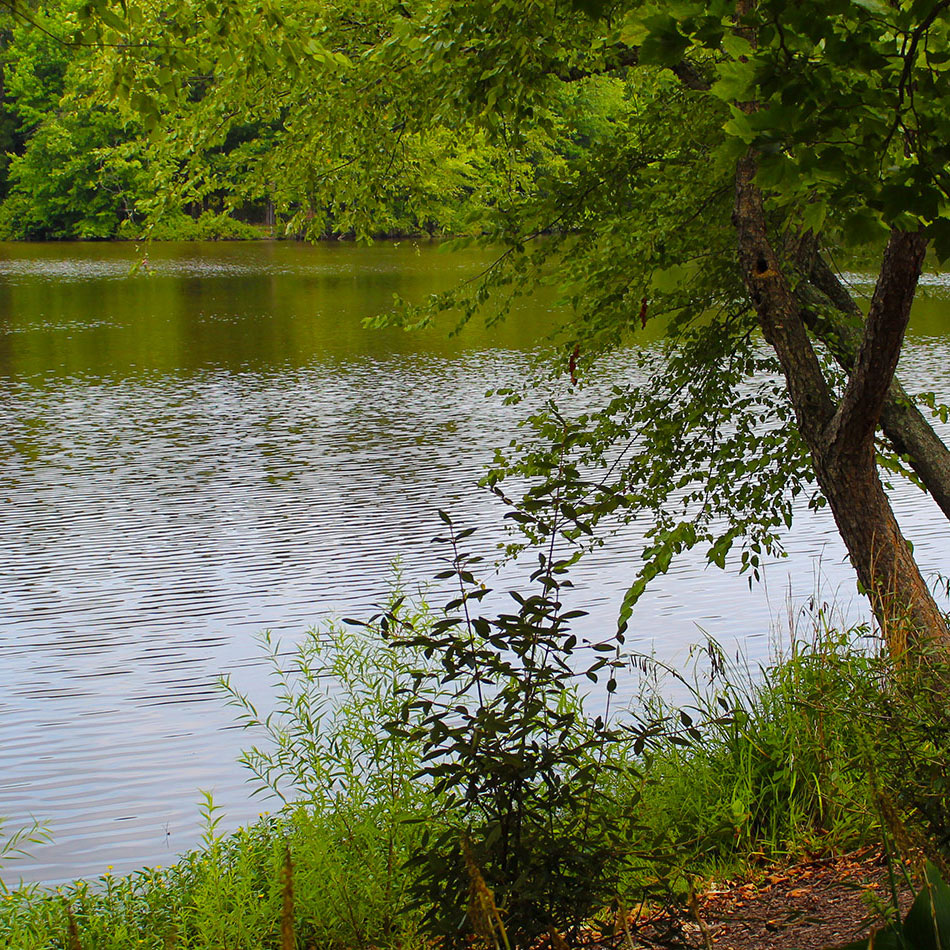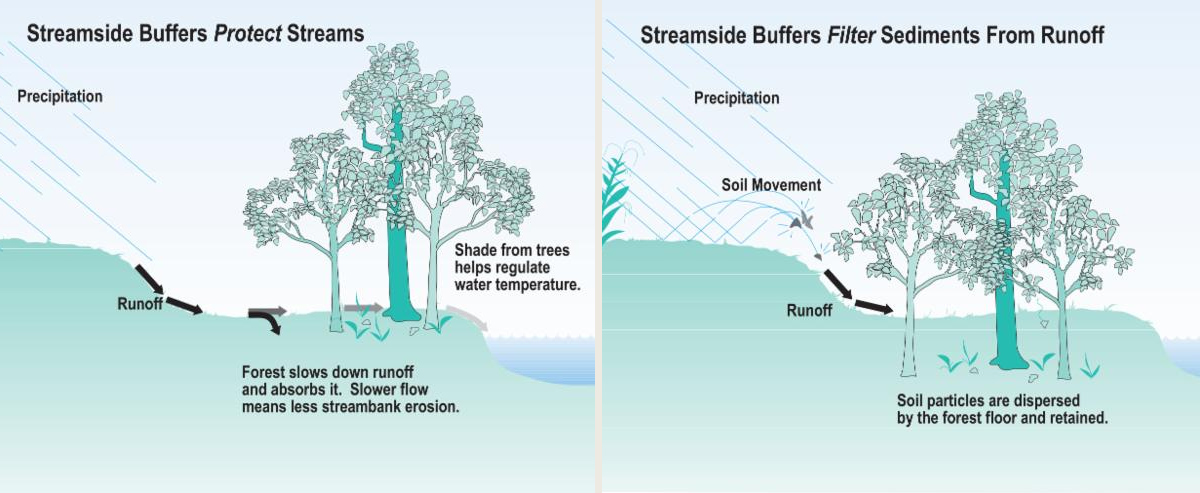
Do you know we live in a Resource Protection area? Resource Protection Areas, or RPAs, are the corridors of environmentally sensitive land that lie alongside or near the shorelines of streams, rivers and other waterways. In their natural condition, RPAs protect water quality. RPAs fi lter pollutants from storm-water runoff, reduce the volume of storm-water runoff, prevent erosion, and perform other important biological and ecological functions.
If the Association or a homeowner is performing any of these items in a 100 foot of the reservoir we need fill out a buffer Modification request:
Structures Not Permitted in the Resource Protection area:

The shoreline buffer or Resource Protection Area (RPA) is an environmentally sensitive corridor surrounding waterways (including our reservoir) whose purpose is to protect water quality by filtering chemical and bacterial pollutants from stormwater runoff, by reducing its volume, and preventing erosion. Chesterfield County adopted the Chesapeake Bay Preservation Ordinance in 1990 and amended it in 2004 to protect these areas, and it actively enforces these regulations along all waterways. RPAs generally extend from the water’s edge to one hundred (100) feet onshore and should be preserved in a natural state, except for judicious clearing for view and breeze. The Shoreline Buffer Policy primarily applies to common property owned by the WCA, which extends from the resident’s property lines to the lake, and to those residents whose property boundaries lie within the RPA.
Read the full policy: https://drive.google.com/file/d/1wguLcA60-khTXjRChijrm1rmLbi4usYC/view?usp=sharing

An Erosion Prevention Device (EPD) protects our shoreline. If you are a waterfront property owner who is considering installing or modifying an erosion prevention device on Woodlake common property, you are required to contact Chesterfield County for a permit from the Environmental Engineering, Utilities, and Building departments. Additionally, you are required to complete a maintainence covenant agreement with the Woodlake Community Association.
WOODLAKE COMMUNITY ASSOCIATION PERMITTING PROCESS:
Erosion Protection Devices (docks) are permitted for placement in the Swift Creek Reservoir provided that the resident requesting the structure completes the County’s permitting process. The process requires both a Building Permit and an Application for the Placement of a Dock within the Swift Creek Reservoir (links provided below). Both applications ensure the dock is structurally sound and that property rights and environmental buffers are respected. Please contact Chesterfield County’s Department of Utilities – Right of Way (804-748-1361) and Department of Building Inspections (804-748-1057) for questions or additional information.
Click HERE for the Residential Building Permit Application. Click HERE for the Application for a License Agreement and Resource Protection Area Encroachment for the Placement of a Dock within Swift Creek Reservoir.
For the Erosion Prevention Device Application, click HERE!